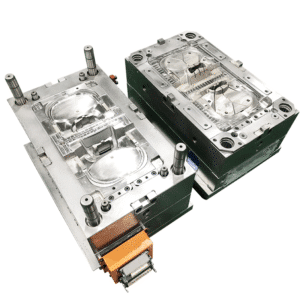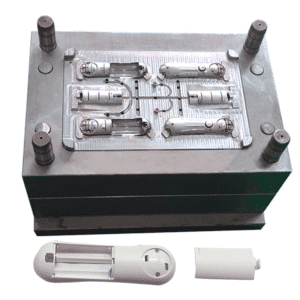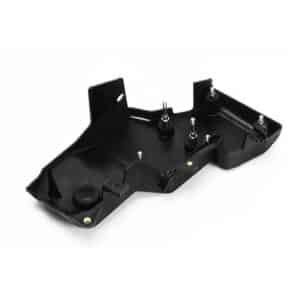Multi Cavity Mold For Industrial Equipment
When do we need multiple cavities? Before starting to make plastic molds, plastic mold suppliers need to understand the following customer’s needs to facilitate design.
YCH Mold:Crafting Precision, Shaping Innovation
- Cost-Effectiveness
- Design Flexibility
- High Efficiency and Productivity
- Consistent Quality and Precision
- Attentive Service
Description
Part function: Plastic component for industrial equipment
Part material: PP
Shrink rate: 1.7/100
Part finish: SPI-B3
Color: Natural
Cavity: 6 cavities
Gate type: Cold runner sub gate
Cavity and core steel: NAK80 (30-32HRC)
Mold base: 1050
Standard components: LKM metric standard
Injection molding machine size: 250T
Product Features
Here are a few key product features commonly seen in our custom multi-cavity molds:
1.Robust Construction: Industrial equipment molds typically feature robust construction methods using materials like high-grade tool steel or other resilient substances capable of withstanding high pressures, temperatures and wear for extended production runs.
2.Multiple Cavities: Like home product molds, industrial equipment molds include multiple cavities to maximize production efficiency and output.
3.Precision Machining: For optimal mold quality and uniformity in its parts, precision machining of its cavities and components to extremely close tolerances ensures consistency and uniformity across each mold part produced.
4.Reinforced Cooling System: Given the larger dimensions and higher thermal loads associated with industrial equipment parts, their molds typically utilize reinforced cooling systems in order to provide rapid and uniform cooling of molten material for reduced cycle times and to avoid deformation.
5.Hot Runner or Cold Runner System: Depending on the requirements and process for molding industrial equipment molds, either hot runner systems or cold runner systems may be utilized to deliver liquid material directly into their cavities. Hot runner systems tend to minimize material waste while speeding cycle times by quickly dispensing liquid material directly.
6.High-Performance Ejection System: Industrial equipment molds require high-performance ejection systems capable of safely dislodging finished parts from mold cavities even under high-pressure molding environments.
7.Advanced Venting System: Proper venting is critical in order to avoid air traps and ensure complete filling of cavities with molds, including industrial equipment molds that utilize advanced venting systems like venting channels or vacuum venting in order to allow excess air and gases from molding processes to escape safely and quickly. Industrial equipment molds typically include advanced venting solutions like this to facilitate this process and facilitate escape of air and gases during molding processes.
8.Integrated Inserts or Overmolding Capabilities: Certain industrial equipment parts require the integration of inserts or the overmolding of additional materials for increased functionality or durability, molds with provisions for inserts or overmolding capabilities can help ensure their smooth integration during molding processes.
9.Customization Options: Industrial equipment molds often come equipped with customizable features to accommodate specific part designs, material requirements or production parameters. This may include removable inserts or adjustable cavities. Furthermore, modular mold components may even offer added customizability options for manufacturing parts more effectively.
10.Quality Control Features: In order to guarantee consistent and quality molds for industrial equipment molds, quality control features may include sensors, monitoring systems or automated process controls to detect deviations or defects during production and correct them immediately.
These features enable industrial equipment molds to meet the rigorous performance, durability and quality requirements associated with manufacturing components for heavy-duty applications.
























